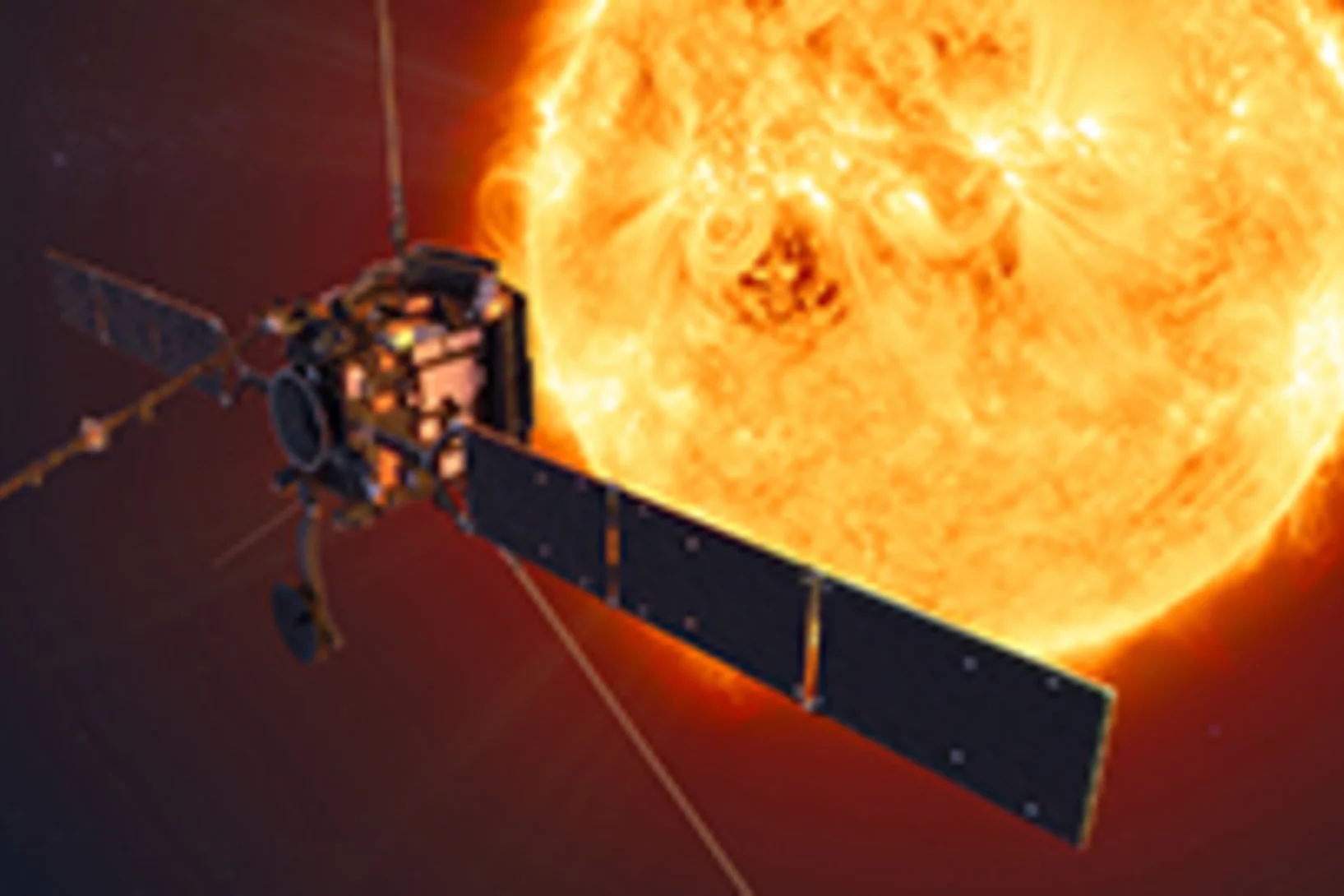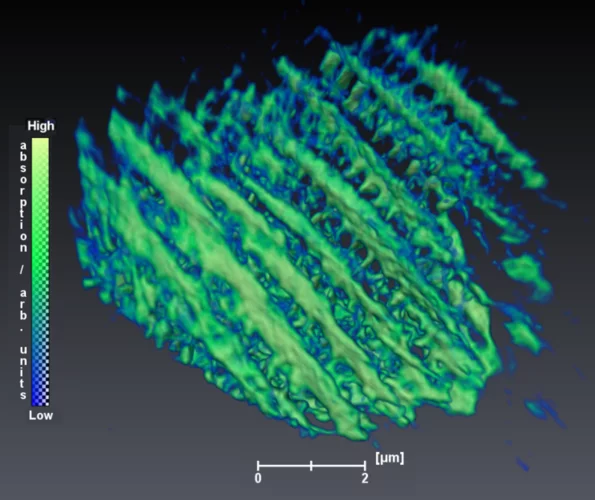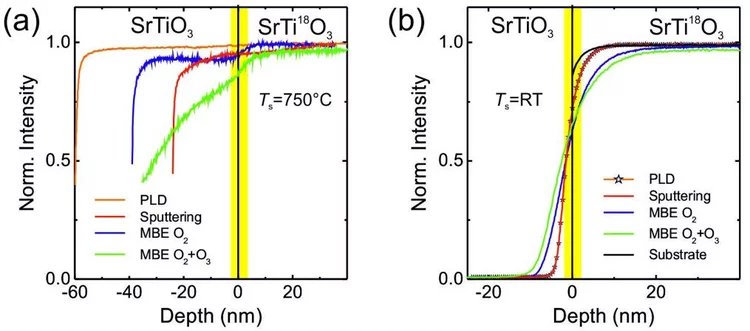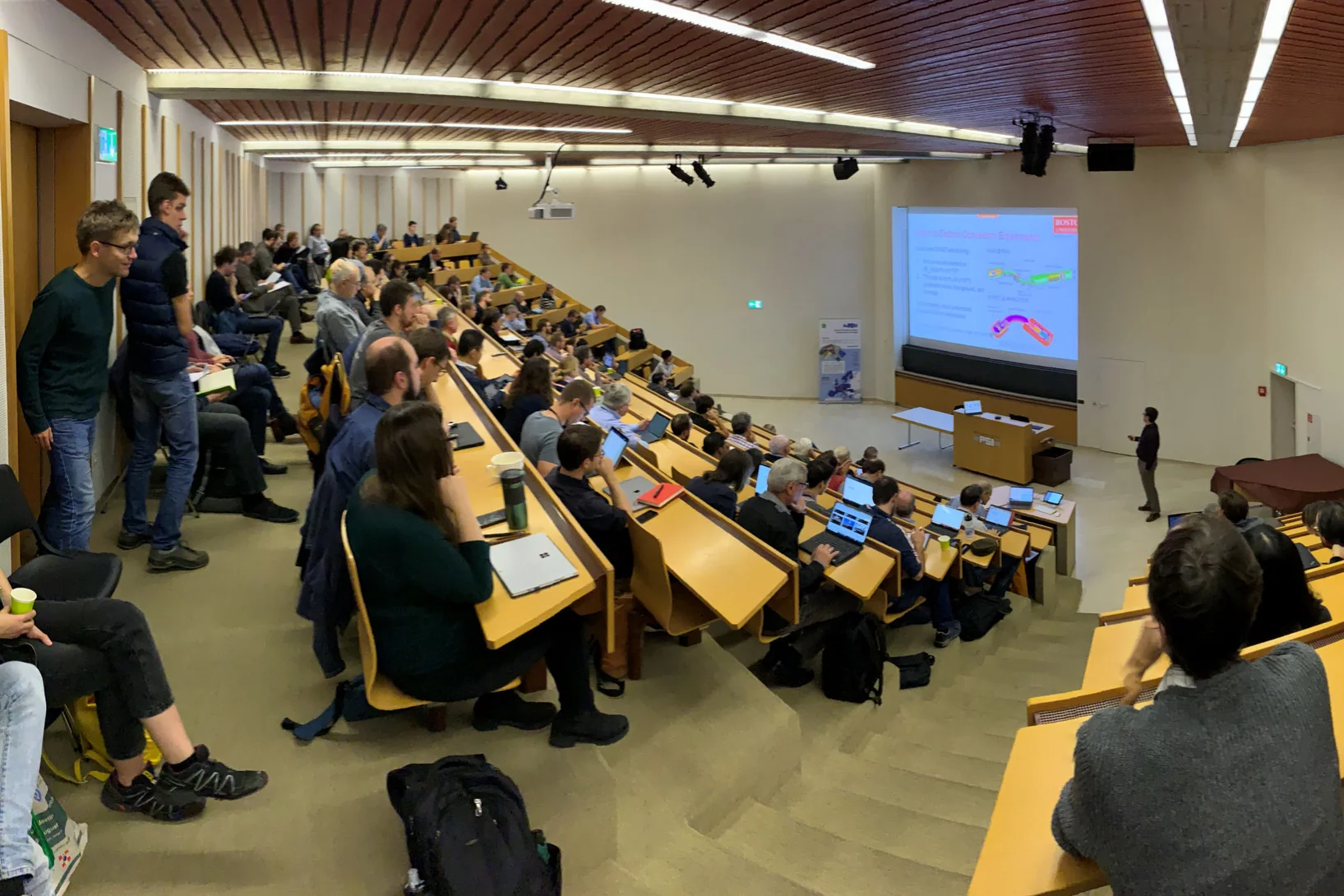At PSI, several projects are dedicated to important research questions concerning the Sars-CoV-2 coronavirus and the resulting diseases. We provide information on activities and projects, for example on investigations of lung tissue, on the production of proteins and antibodies or on ideas for new research on Covid-19.
Useful links
A link between quantum magnetism and electronic band topology
Muon spin rotation experiments establish a quantitative link between the magnetic and topological electronic properties of the kagome magnet Co3Sn2S2 — and demonstrate effective ways for tuning these properties.
A link between quantum magnetism and electronic band topology
Muon spin rotation experiments establish a quantitative link between the magnetic and topological electronic properties of the kagome magnet Co3Sn2S2 — and demonstrate effective ways for tuning these properties.
Vertragsunterzeichnung 2020
Viele unbekannte Gesichter, Nerven und Mut. Werfen Sie einen Blick auf die 24 neuen Lernenden und 3 neuen Praktikantinnen, die in Begleitung ihrer Eltern die Lehr- oder Praktikumsverträge am 22.01.2020 unterschrieben.
Cloud droplet formation on soot particles
PSI researchers went to the Jungfraujoch research station and applied in situ measurement techniques in real clouds to investigate the ability of soot particles to form cloud droplets. This is a key process determining the atmospheric life-cycle of soot particles, which are primarily emitted by combustion engines and which have a warming effect on climate by absorbing solar radiation.
Swiss STIX X-ray telescope sets off for the sun
On 10 February, the ESA mission Solar Orbiter is scheduled to start. The Swiss X-ray telescope STIX will be launching too – with detectors developed at PSI.
Tunable anomalous Hall conductivity through volume-wise magnetic competition in a topological kagome magnet
Magnetic topological phases of quantum matter are an emerging frontier in physics and material science. Along these lines, several kagome magnets have appeared as the most promising platforms. Here, we explore magnetic correlations in the kagome magnet Co3Sn2S2. Using muon spin-rotation, we present evidence for competing magnetic orders in the kagome lattice of this compound.
Soft X-ray Laminography: 3D imaging with powerful contrast mechanisms
3D imaging using synchrotron radiation is a widely used tool that allows access to the inner structure of complex objects. An international and interdisciplinary consortium of scientists from the Swiss Light Source (PolLux and cSAXs), the Friedrich-Alexander-Universität Erlangen-Nürnberg, and the University of Cambridge developed the new 3D imaging technique of Soft X-ray Laminography (SoXL). SoXL allows for the investigation of thin and extended samples while taking advantage of the characteristic absorption contrast mechanisms in the soft X-ray range, providing 3D information with nm spatial resolution.
Assessment of stress corrosion cracking incidents in Alloy 182 – reactor pressure vessel dissimilar metal welds
Several stress corrosion cracking (SCC) incidents recently occurred in Alloy 182 - reactor pressure vessel (RPV) dissimilar metal welds in boiling water reactors (BWR). These SCC cracks tend to grow towards the RPV due to weld microstructure and residual stress profiles and might grow into the RPV. They thus represent a serious potential safety concern. PSI has evaluated under which conditions such cracks could grow into the RPV and also developed SCC crack growth disposition curves for the RPV steels that can be used for safety assessments of such cracks. With these curves that were recently accepted as a new Code Case N-896 in the ASME Boiler and Pressure Vessel Code, sufficient safety margins could be demonstrated for such crack configurations with the current inspection intervals of the periodic in-service inspection.
Possible room-temperature signatures of unconventional 4f-electron quantum criticality in YbMn6Ge6−xSnx
We investigate the Sn composition dependence of the Yb valence and local magnetization in YbMn6Ge6−xSnx (4.25 ≤x≤ 5.80) using x-ray absorption spectroscopy (XANES) and x-ray magnetic circular dichroism at the Yb L3 edge. In these materials, where Mn is ferromagnetically ordered, we observe a decrease of the Yb valence upon reducing the chemical pressure by Sn doping and a suppression of the Yb magnetic moment for strongly hybridized 4f states (ν ∼ 2.77).
Nuclear Data – Towards a Stronger Link between Nuclear Physics and Nuclear Simulations
All matter in the universe is made of atoms and all atoms are made of particles. Spontaneous changes within atoms as well as collisions between atoms and surrounding particles are nuclear reaction processes guided by nuclear physics laws. To simulate these processes using computer models, probabilities for the various involved nuclear reactions are required. This is precisely the role of nuclear data: supply the computational models with evaluated quantities representing these nuclear reaction probabilities.
Through this, nuclear data can effectively be seen as the fundamental link between nature and any computer simulation involving nuclear reactions. It is thus of primary importance to continuously improve knowledge on nuclear data. In that context, researchers at the laboratory for reactor physics and thermal-hydraulics have recently focused on the development and application of Bayesian frameworks combining both differential and integral experiments for the improvement of nuclear data. By considering the different experiments together, the aim is to achieve enhancements of the nuclear data evaluations while preserving the basic nuclear physics sum rules.
Assessing Resilience of Europe's Natural Gas Network
FRS researchers used open-sourced information to access the disruption performance of the European Natural Gas Network, presenting a supply grade mapping for the case of Italy.
Magnetism and anomalous transport in the Weyl semimetal PrAlGe: possible route to axial gauge fields
In magnetic Weyl semimetals, where magnetism breaks time-reversal symmetry, large magnetically sensitive anomalous transport responses are anticipated that could be useful for topological spintronics. The identification of new magnetic Weyl semimetals is therefore in high demand, particularly since in these systems Weyl node configurations may be easily modified using magnetic fields. Here we explore experimentally the magnetic semimetal PrAlGe, and unveil a direct correspondence between easy-axis Pr ferromagnetism and anomalous Hall and Nernst effects.
Simulation: The third pillar of science
PSI researchers simulate and model large research facilities as well as experiments, for example, in the materials and biological sciences. Andreas Adelmann, head of PSI's Laboratory for Scientific Computing and Modelling, explains how they do it.
A third dimension for the nanoscale
Researchers of the Laboratory for Catalysis and Sustainable Chemistry (LSK) from PSI have designed uneven probe supports, which reveal the hidden site of nanocrystals.
Their simple approach allows transmission electron microscopes (TEMs) complete access to the atomic structure of nanomaterials without the need for cumbersome experimental effort.
Anna Sótér starts Ambizione fellowship
Anna Sótér has started an Ambizione fellowship at ETH Zurich and PSI. Her project is dedicated to developing a novel source of cold muonium atoms, which will be used for a new interferometry experiment that enables testing the weak equivalence principle by directly probing gravitational interaction of antimatter.
Well varnished violins play longer
Traditionally, violins are varnished to protect them from humidity and other environmental influences. At PSI, a scientific team has investigated how different coatings affect the instrument. Under no circumstances, they found, should anyone try to do without varnish completely.
Wrinkles and wrinklons: magnetic films with tuneable topographies
Sebastian Gliga has been awarded an SNF Spark grant to investigate the possibility of combining magnetic thin films with graphene to create logical devices. As electronic components, such as those found in computer CPUs, are miniaturized, they generate waste heatand alternative schemes are being explored to create novel data processing architectures. This project, to be carried out in the Microspectroscopy group (PSD), aims to exploit the tunable topography of graphene to create magnetic systems, which allow simultaneously guiding spin waves and performing logical operations based on spin wave interference.
Thermometerhalterung für Ölbäder
Einen neu entwickelten Thermometerhalter für die Laboranten EFZ, Fachrichtung Chemie erleichtert nun die Arbeit, dies mit grosser Unterstützung der Lernenden Polymechaniker EFZ.
Topological Magnetic Phase in the Candidate Weyl Semimetal CeAlGe
We report the discovery of topological magnetism in the candidate magnetic Weyl semimetal CeAlGe. Using neutron scattering we find this system to host several incommensurate, square-coordinated multi-k⃗ magnetic phases below TN. The topological properties of a phase stable at intermediate magnetic fields parallel to the c axis are suggested by observation of a topological Hall effect.
Energy Conversion Processes with Perovskite-type Materials
Mixed oxides derived from the perovskite structure by combination of A- and B-site elements and by partial substitution of oxygen provide an immense playground of physico-chemical properties. Here, we give an account of our own research conducted at the Paul Scherrer Institute on perovskite-type oxides and oxynitrides used in electrochemical, photo(electro)chemical and catalytic processes aimed at facing energy relevant issues.
Oxygen diffusion in oxide thin films grown on SrTiO3
SrTiO3 thin films were grown on 18O-exchanged SrTiO3 single crystalline substrates by pulsed-laser deposition, rf sputtering, and oxide molecular-beam epitaxy to study their oxygen diffusion depth profiles using secondary ion mass spectrometry and elastic recoil detection analysis depth profiling. The oxygen depth profiling shows that SrTiO3 films prepared with the three different deposition techniques will take oxygen from the substrate, even at room temperature. This confirms that the substrate is one possible oxygen source for the growth of oxide thin films independent of the physical vapor deposition technique employed. It was also found that a reactive oxygen environment changes the oxygen composition of the substrate during the growth of a film and partly replaces 18O with 16O up to a depth of several tens of nm. These findings imply that SrTiO3 and therefore other ion conducting oxide substrates, which are commonly used as platforms for thin film growth, can be considered capricious in nature with respect to oxygen chemistry and lattice constants.
Modelling and simulation pay off
Researchers in the Laboratory for Scientific Computing and Modelling at the Paul Sherrer Institute PSI solve the most complex problems through a combination of theory, modelling, and high-performance computing. With powerful computers, they simulate the smallest molecules or large-scale research facilities.
Modelling and simulation pay off
Researchers in PSI's Laboratory for Scientific Computing and Modelling solve the most complex problems through a combination of theory, modelling, and high-performance computing. With powerful computers, they simulate the smallest molecules or large research facilities.
Ultrafast diffuse x-ray scattering of a hybrid perovskite crystal
Organic–inorganic ‘hybrid’ perovskites have recently gained attention as a low-cost alternative to silicon solar cells. However, many properties of these materials are still poorly understood. In particular, how imperfections in the crystals, which can be both static or dynamic, affect energy transport remains unclear.
Workshop on the Physics of Fundamental Symmetries and Interactions
The 5th Workshop on the Physics of Fundamental Symmetries and Interactions (PSI2019) took place from 20 to 25 October 2019 at PSI, bringing together 200 scientists from all over the world working on some of today’s most precise particle-physics experiments at the low-energy frontier.
Field-Induced Double Spin Spiral in a Frustrated Chiral Magnet
X-rays and neutrons has been used to investigate the correlation between structural and magnetic chirality in magnetic fields and its impact on the polarization in multiferroic langasites. A long wavelength modulation of the magnetic structure has been found, and it is shown that the chirality of the crystals structure connects to chirality of the magnetic structure that leads to an additional electric polarization in this field induced phase, which, depending on the christal chirality, can either increase the electric polarization or lead to a reversal of it for increasing magnetic fields. The theoretical description based on allowed Lifshitz invariants intriguingly contain all the essential ingredients for the realization of topologically stable antiferromagnetic skyrmions.
Determination and evaluation of the nonadditivity in wetting of molecularly heterogeneous surfaces
Every folded protein presents an interface with water that is composed of domains of varying hydrophilicity/-phobicity. Many simulation studies have highlighted the nonadditivity in the wetting of such nanostructured surfaces in contrast with the accepted theoretical formula that is additive. We present here an experimental study on surfaces of identical composition but different organization of hydrophobic and hydrophilic domains.
Florian Döring received the PSI Founder Fellowship
A new PSI spin-off is on the horizon: Dr. Florian Döring, PostDoc in the Laboratory for Micro- and Nanotechnology, received a PSI Founder Fellowship at Park Innovaare.
Assessment of electricity supply resilience
Researchers from FRS and the Paul Scherrer Institute have developed the Electricity Supply Resilience Index (ESRI) to measure electricity supply resilience in 140 countries.
TecDay: LMX meets Hohe Promenade
TecDay is an SATW initiative that was developed at the Kantonsschule Limmattal in 2007 and has since been rolled out to more than 60 secondary schools across Switzerland. By the end of 2017 it had reached around 45,000 students and 5,000 teachers. In December 2019 the LMX contributed in one module, that received a total of 16 students over the course of a morning. The module was organized in three different “stations”, each one focusing on one topic or area that the group is working on.





























